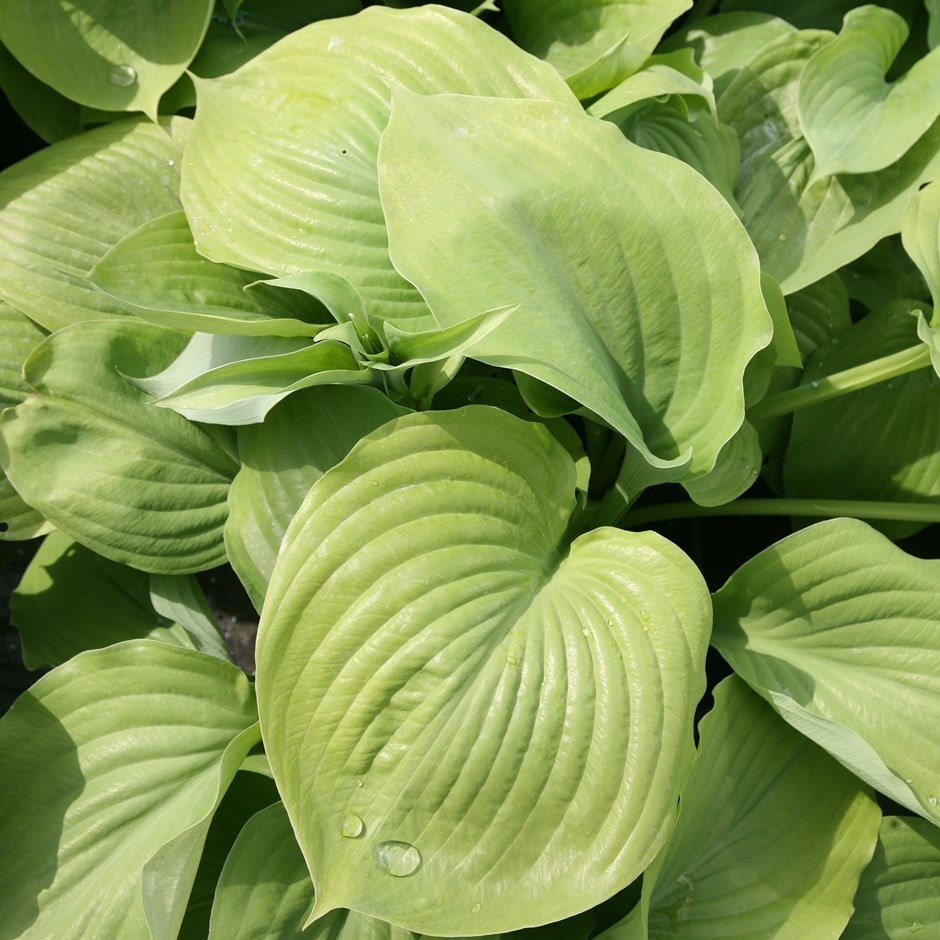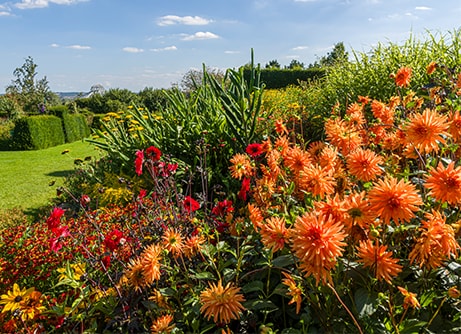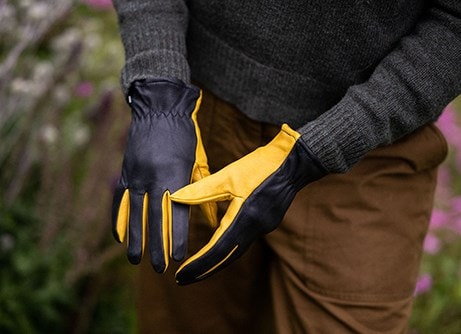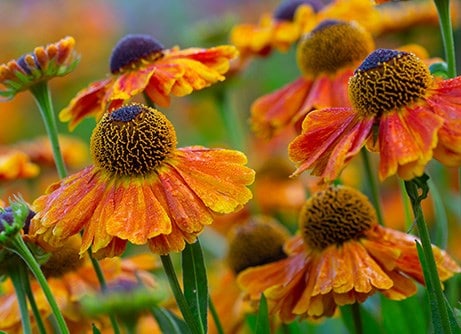
In the warmer months this tough hosta has huge, corrugated yellow-green leaves, and in July spikes of pale lilac flowers appear. This plaintain lily makes a bold statement in a large container in a shady courtyard. In a border, it looks stunning close to an entrance or path, or among other plants with distinctive foliage, such as ferns. Although it will cope with some sun, the soil must be kept moist. The leaves are best shaded from the midday sun and sheltered from cold, drying winds. Once established, its layers of leaves will suppress weeds, too.
How to care for Hosta Sum and Substance:
You'll get thicker, lusher leaves if you give your hostas a really good feed. An annual mulch in spring or autumn will help to keep the weeds down and is an easy way to improve soil and boost nutrient levels. Add a generous mulch of about 5-10cm (2-4in) deep of garden compost or leaf mould around the plant. Spraying the leaves regularly with a high nitrogen fertiliser during the growing season will also help to boost leaf size. Slugs and snails love hostas, so you will need to protect against them. Use an organic nematode treatment in early spring to ward off slugs. Or simply stick to planting it in a container.
Water your hosta well as soon as you plant it and from then on water regularly during their first growing season. Give them a water about once or twice a week around the base of the plant, avoiding the leaves. Little and often can be disastrous as it encourages the plant to produce roots closer to the surface in a desperate quest for moisture.
Water your hosta well as soon as you plant it and from then on water regularly during their first growing season. Give them a water about once or twice a week around the base of the plant, avoiding the leaves. Little and often can be disastrous as it encourages the plant to produce roots closer to the surface in a desperate quest for moisture.
Flowering period:
- Jan
- Feb
- Mar
- Apr
- May
- Jun
- Jul
- Aug
- Sep
- Oct
- Nov
- Dec
Eventual height:
0.75m
Eventual spread:
1.2m
Position:
Light shade / shade
Rate of growth:
Average
Soil:
Moderately fertile, moist, well-drained soil
Hardiness:
Fully hardy
-
This perennial dies back to below ground level each year in autumn, then fresh new growth appears again in spring.
Product options

9cm pot
£9.99
In stock
(shipped within 2-3 working days)
(shipped within 2-3 working days)

3 × 9cm pots
£23.99
£8.00 each
In stock
(shipped within 2-3 working days)
(shipped within 2-3 working days)

6 × 9cm pots
£42.99
£7.17 each
In stock
(shipped within 2-3 working days)
(shipped within 2-3 working days)

2 litre pot
£19.99
In stock
(shipped within 2-3 working days)
(shipped within 2-3 working days)

3 × 2 litre pots
£47.99
£16.00 each
In stock
(shipped within 2-3 working days)
(shipped within 2-3 working days)
1
Delivery options (pick your preferred option at checkout)
Standard Delivery£5.99
Named Day Delivery£10.99








